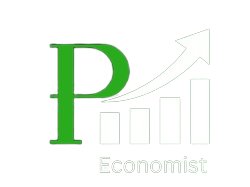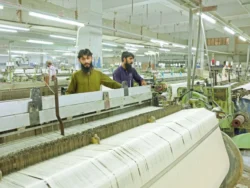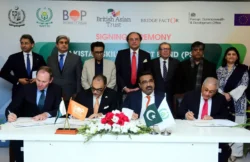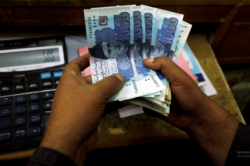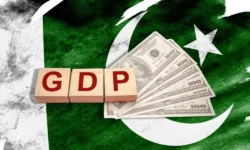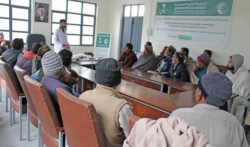Economy shows signs of recovery
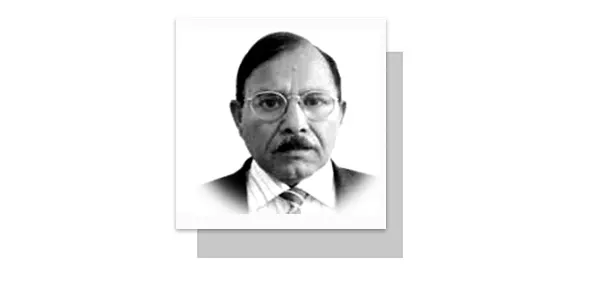
15 June 2024
Published in: Pakistan Observer
Needless to emphasize that when the present coalition government was installed after the general election the economy was in a complete shambles and the hydra-headed inflation was badly affecting the lives of the poor masses. Fears were being expressed that the country may not be able to sustain this trend for long and if the things were not reversed it could have disastrous consequences for the country both economically and politically. These fears were aggravated by the fact that while the incumbent government was making strenuous efforts to revive the economy there were also some political forces which were making desperate efforts to aggravate political instability in the country designed to torpedo revival of the economy. However, it is encouraging to note that notwithstanding the debilitating impact of the orchestrated political instability, the policies pursued by the political and military leadership have started showing their positive results. This is not a make belief but an irrefutable reality supported by concrete outcomes.
The inflation has come down from 39% to 11%. This has prompted the State Bank to cut the policy rate by 150 bps after sticking to 22% for well over a year in spite of persistent demands by the business community and other stakeholders in the economy to bring it down. The bank attributes this reduction to upswing in the economic activity, improvement in the external sector outlook and international reserves resulting from lower current account deficit. The cut in the policy rate by 150 bps is actually more than the expectations of the market which anticipated a maximum cut by 100 bps. The timing of the cut in policy rate is quite significant as it came at a time when the budget was about to be announced and in the midst of negotiations with the IMF for a new bail-out package. It also signified bank’s confidence in the fact that the economic stability was gaining traction and that concluding a new agreement with the Fund was just a matter of time. The economists believe that the rate cut will lead to substantial debt payment savings to the government bringing down financial costs of businesses and perhaps provide a boost to the stock market as well. The fact that inflation has come down substantially is also a big relief to the masses who were groaning under the impact of run-away inflation.
Coinciding with cut in the policy rate, the World Bank has also announced to provide $ 1 billion for Dasu Hydropower Project which will support country’s transition towards clean and affordable energy. According to the statement issued by the Bank in this regard the financing will also support expansion of hydropower electricity supply, improve access to socio-economic services for local communities and build WAPDA’s capacity to prepare future hydropower projects. It added that the site of the dam was one of the best hydropower sites in the world and would prove to be a game changer for Pakistan energy sector.
The dam will have an installed capacity of 4,320–5,400 MW upon completion. “The project is being built in stages. DHP-I has a capacity of 2,160 MW and will generate 12,225 gigawatt hours (GWh) year of low-cost renewable energy. The DHP-II will add 9,260–11,400 GWh per year from the same dam. Even more satisfying development is that through the efforts of SIFC major commitments by the Gulf States have been made for investment in different sectors of Pakistan economy. Saudi Arabia has also pledged to make huge investments in Pakistan and a Saudi delegation has already visited Pakistan to identify the areas for investment. Saudi Crown Prince is also likely to visit Pakistan in the near future to give a final shape to the investment proposals.
The recent visit to China by Prime Minister and COAS has also produced very encouraging results. During the visit 32 MOUs were signed between the two countries for investments in multiple sectors of the economy. China has also agreed to upgrade phase-II of CPEC under which huge investments will pour in not only to consolidate the gains made in the first phase but also to take the economic cooperation between the two countries to still higher level. The presence of the COAS helped in removing concerns of the Chinese leaders and business community about the safety of Chinese working on CPEC projects. Pakistan Army has already created a special division for the security of Chinese working on CPEC projects. However, the recent attacks on Chinese engineers and workers had raised concerns about their safety. Those concerns were adequately addressed by the presence of the COAS General Asim Munir who in his interactions with the Chinese leaders briefed them regarding security measures being adopted to forestall the repeat of such attacks.
A high powered Chinese delegation is likely to visit Pakistan in the near future to complete deliberations on the investment prospects. It is also worth mentioning that during the visit the Prime Minister also met CEO of Huawei which has pledged to train 2000,000 Pakistanis in IT and AI which in my view is a very significant outcome of the visit besides the Chinese renewed commitment to upgrade CPEC and stand by Pakistan under all circumstances. All the foregoing developments are strong pointers to the fact that the process to revive the economy was well on its course.
